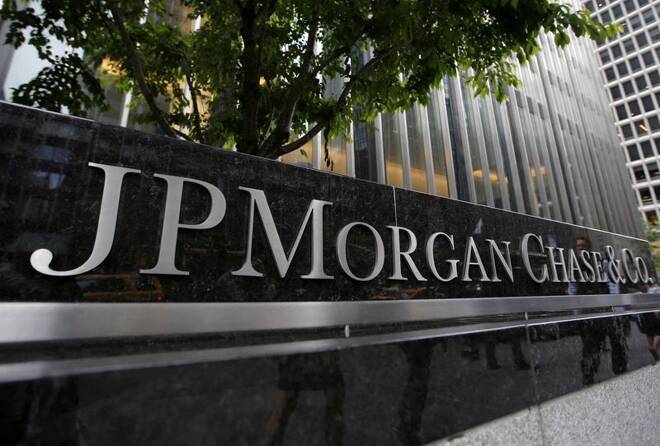Advertisement
Advertisement
Big U.S. banks say spending patterns show consumers are in good shape
By:
By Elizabeth Dilts Marshall NEW YORK (Reuters) - Top executives at the biggest U.S. banks have been optimistic about the nation's economic outlook this earnings season, pointing to healthy consumers who have cash in the bank, are again eager to spend and also to borrow.
By Elizabeth Dilts Marshall
NEW YORK (Reuters) – Top executives at the biggest U.S. banks have been optimistic about the nation’s economic outlook this earnings season, pointing to healthy consumers who have cash in the bank, are again eager to spend and also to borrow.
Consumer spending, a key driver of the U.S. economy, fell sharply during the start of the pandemic as Americans, fearing the worst, hoarded cash and saved money by staying at home.
At the same time, government aid padded many Americans’ bank accounts, and many used the cash to pay off debts.
Now, JPMorgan Chase & Co and Bank of America, the No. 1 and 2 largest U.S. banks which together reach around 140 million households, say consumers are in good shape, even if the Omicron variant dampened spenders’ enthusiasm some late last year.
Some analysts also cautioned inflation had the potential to further dampen spending if it continues.
Bank of America, which provided the most comprehensive consumer spending data when it reported earnings on Wednesday, said its 67 million customers spent a record $3.8 trillion in 2021, a 24% increase from 2019, the pre-pandemic benchmark.
That figure includes all the ways in which the bank’s customers spend money – credit and debit cards, ACH, wire transfers, cash, checks and money sent via platforms like Zelle.
Fourth quarter payments were up 28% on the same period in 2019, also a record jump. Spending has continued into January, with payments up 11% as of Jan. 17 compared to the beginning of January 2021, Bank of America said.
Nearly all customers’ account balances grew from June to December, it added.
“We believe there’s lots of potential spending capacity left as average deposit balances continue to move up to the end of the year despite the heavy spending you see,” Bank of America Chief Executive Officer Brian Moynihan said on Wednesday.
JPMorgan said that combined debit and credit card spending was 27% higher in the fourth quarter last year compared to the fourth quarter 2019, with travel and entertainment spending up 13% over the same period.
Wells Fargo & Co said credit card spending and median account balances for the fourth quarter were both up 27% compared to pre-pandemic levels.
Consumer loan balances across the industry also fully recovered from their COVID fall in the fourth quarter, led by auto loans and loans for tuition, medical care, vacations and other purposes, according to Federal Reserve data.

“Seeing the results … make us incrementally more optimistic about the loan growth trends,” said Citigroup analyst Keith Horowitz.
CREDIT CARDS, INFLATION
Still, there were some signs consumers have not fully returned to their pre-COVID spending patterns.
Spending on credit cards, for example, which rebounded strongly in October and November, plateaued from early December and remain 7% below their pre-pandemic peak, Fed data shows.

JPMorgan, for example, reported credit card balances for the fourth quarter were up 5% compared to the same period in 2020, but they were still 8% lower than pre-pandemic levels because customers continue to pay down debt.
The bank also noted that travel and entertainment credit and debit card spending “saw some softening … contemporaneously with the Omicron wave.”
That looked to be in line with some softening in retail sales during December as consumers, fearing supply chain delays, completed their shopping early, and as Omicron stopped others from getting into stores.
Wells Fargo Chief Executive Officer Charles Scharf also noted that some of the uptick in consumer spending was driven by inflationary pressure. That is a possible overhang for the consumer spending outlook, said Viola Risk Advisors bank analyst David Hendler.
“Inflation could hurt people’s ability to spend money because it’s too expensive,” he said.
(Reporting by Elizabeth Dilts Marshall; additional reporting by Matt Scuffham; editing by Michelle Price and Bernard Orr)
About the Author
Reuterscontributor
Reuters, the news and media division of Thomson Reuters, is the world’s largest international multimedia news provider reaching more than one billion people every day. Reuters provides trusted business, financial, national, and international news to professionals via Thomson Reuters desktops, the world's media organizations, and directly to consumers at Reuters.com and via Reuters TV. Learn more about Thomson Reuters products:
Latest news and analysis
Advertisement
